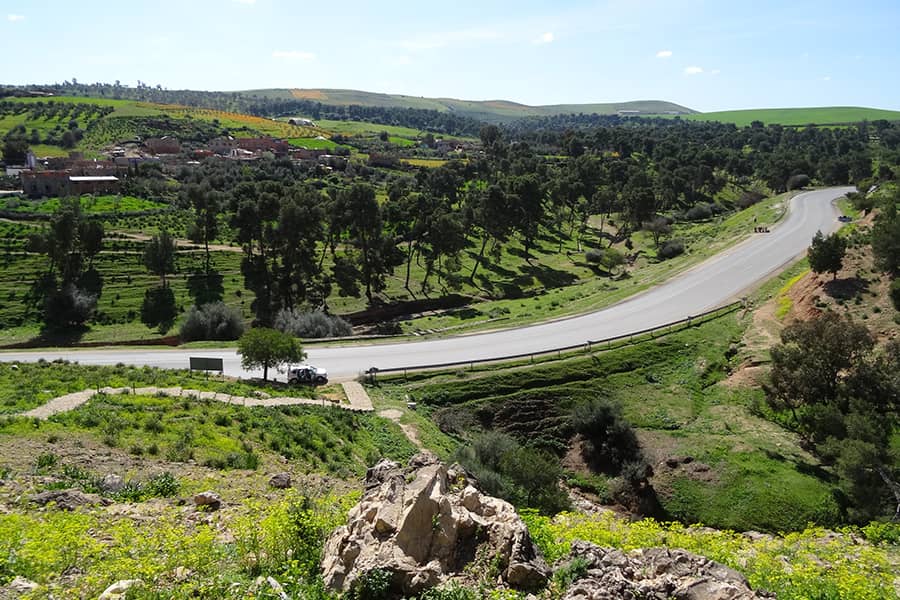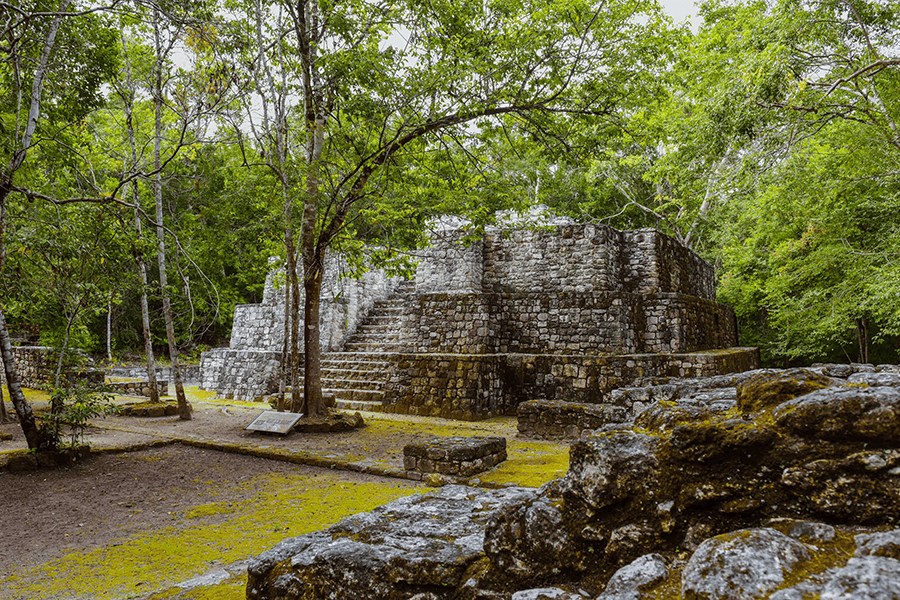Archaeologists have found remnants of a 5,000-year-old agricultural community in Morocco, comparable in size to the ancient city of Troy.

Discovering Ancient Agricultural Communities in Morocco
The discovery of a 5,000-year-old agricultural community in Morocco sheds light on the ingenuity and resilience of our ancestors. Unlike the nomadic tribes often associated with ancient North Africa, these early settlers cultivated complex farming practices that transformed their environment. By employing irrigation techniques and crop rotation long before such methods became widespread, they demonstrated a sophisticated understanding of sustainable agriculture that many modern communities can learn from today.
Archaeologists have unearthed clay structures and communal granaries, hinting at a societal organization that thrived through cooperation. The remnants suggest not only advanced agricultural knowledge but also a vibrant social life—pottery adorned with intricate designs indicates cultural expressions intertwined with daily routines. As researchers dive deeper into this remarkable find, it opens avenues for exploring how these communities interacted with neighboring regions. This evolution paints a broader picture of human development in Africa, urging us to reconsider the narrative around ancient civilizations and their impacts on global history.
Overview of the Archaeological Findings
The recent archaeological findings in Morocco unveil a remarkable agricultural community that thrived over 5,000 years ago, showcasing an intricate tapestry of human ingenuity and resilience. Excavated tools, ceramics, and remnants of granaries point to advanced farming techniques and a sophisticated understanding of crop cultivation in an era often overshadowed by urban centers like Troy. These artifacts not only highlight the daily life of this ancient society but also suggest a trade network that might have connected them with distant regions across North Africa and Mediterranean shores.
Moreover, the sheer scale of this settlement invites fresh discussions on social structures and community organization during prehistoric times. Unlike the isolated narratives typically associated with early agriculture, these findings challenge us to rethink the interconnectedness among various cultures. Could this Moroccan site be one piece in a larger puzzle that reveals how agricultural innovations facilitated complex societies long before recorded history? The implications extend beyond local significance; they articulate an evolving story about human adaptation to environment and climate that resonates throughout time.
Historical Context of Ancient Morocco
The historical tapestry of ancient Morocco is woven with vibrant threads of cultural exchange and agricultural innovation, marking it as a significant player in the early Mediterranean world. During the Neolithic period, flourishing communities emerged along the fertile river valleys and coastal plains, where agriculture laid the foundation for societal transformation. The discovery of remnants from this 5,000-year-old community underscores Morocco’s role not merely as a peripheral region but as a vital hub in early agricultural development that rivaled more renowned centers like Troy.
These ancient societies engaged in sophisticated practices, cultivating crops such as wheat and barley while domesticated animals grazed alongside them. Artifacts suggest interactions with distant cultures through trade routes that extended beyond Africa into Europe and Asia. This cultural fluidity enriched their social structure, enabling collaboration among diverse groups which ultimately fortified their resilience against external pressures. As these archaeological findings continue to illuminate prehistoric life along the North African coast, we gain an understanding not just of individual communities but also of an interconnected network that contributed to humanity’s agricultural legacy and shaped socio-political dynamics far beyond its borders.
Comparison with the City of Troy
The discovery of a 5,000-year-old agricultural community in Morocco reshapes our understanding of ancient civilizations by providing an intriguing comparison to the famed city of Troy. While Troy has long been celebrated for its strategic location and mythological significance, this Moroccan site challenges us to consider the value of agrarian societies that may have rivaled it in size and complexity. The convergence of fertile land and innovative farming techniques points to a thriving community that not only sustained its people but also facilitated trade and cultural exchanges akin to those documented in Homeric epics.
Examining these two sites sparks curiosity about how different lifestyles contributed to their development. Troy’s prominence arose from its position as a pivotal trading hub, whereas this agricultural village reflects resilience and adaptability rooted in local resources. As excavations continue, we may uncover layers of social structures, rituals, and communal practices that mirror or even enhance our understanding of urban centers like Troy. Such comparisons invite us to rethink historical narratives: rather than viewing economic might as the sole measure of success, we can appreciate the rich tapestry woven by communities dedicated to agriculture—perhaps indicating that true vitality lies within the harmony between land and life itself.
Significance of Agricultural Practices Found
The discovery of a 5,000-year-old agricultural community in Morocco not only reshapes our understanding of historical societies but also highlights the ingenuity behind early agricultural practices. This ancient community, with its sprawling fields and complex irrigation systems, underscores the strategic planning required to cultivate crops in diverse climates. By delving into these remnants, researchers gain invaluable insights into how early farmers adapted to their environment—developing sustainable methods that enhanced crop yields long before modern technology existed.
Moreover, this remarkable find invites us to rethink the narrative of human civilization’s progression. Instead of a linear evolution from hunter-gatherer societies to advanced agrarian communities exclusively in established fertile regions like Mesopotamia, this site illustrates a more intricate web of interconnectedness across different cultures. Such revelations challenge our assumptions about trade and cultural exchange during antiquity, suggesting that knowledge shared across vast distances may have contributed significantly to successful farming techniques. As we uncover these rich layers of history, we not only celebrate humanity’s enduring relationship with the land but also glean lessons on resilience and resourcefulness that are increasingly relevant today in addressing global food security challenges.
Techniques Used in Excavation and Research
In the quest to uncover secrets from ancient agricultural communities, archaeologists employ a variety of techniques that blend traditional archeological methods with cutting-edge technology. One innovative approach involves ground-penetrating radar (GPR), which allows researchers to visualize subsurface features without disturbing the site. This non-invasive method can reveal hidden structures and layout patterns, providing valuable information about how these early societies organized their settlements. Employing such technology not only preserves the integrity of fragile sites but also enables more comprehensive data collection in less time.
Another key technique is stratigraphic excavation, where layers of soil are meticulously analyzed to understand different building phases or periods of occupation. By carefully documenting each stratum, archaeologists can construct timelines that shed light on how agricultural practices evolved over millennia. Adding a layer of depth to this process, scientists now utilize bioarchaeological methods to study plant remains and animal bones found at excavation sites, offering profound insights into dietary habits and farming practices that sustained these ancient communities in Morocco. Coupled with advances in isotopic analysis for understanding past climates, these diverse strategies help form a cohesive picture of an intricate agrarian society thriving 5,000 years ago—one that parallels renowned urban centers like Troy.
Insights from Artifacts and Structures Unearthed
The artifacts unearthed from this ancient agricultural community provide a fascinating glimpse into the daily lives of its inhabitants. Pottery shards, intricately designed with motifs and patterns unique to their culture, suggest a vibrant aesthetic sensibility that transcended functionality. This artistry not only showcases their craftsmanship but also hints at social stratification; items found in communal areas versus those in assumed private spaces indicate varying levels of wealth and status within the community.
Structures excavated alongside these artifacts reveal advanced architectural techniques that reflect a sophisticated understanding of urban planning. The layout of the settlement, with clearly defined residential zones and communal agricultural areas, points to an organized society capable of sustaining large numbers while fostering cooperation among its members. Moreover, evidence of irrigation systems suggests they practiced innovative farming methods that enabled them to thrive in an environment where water management was crucial for survival. Together, these findings challenge our perceptions of early civilizations as primitive; instead, they paint a portrait of dynamic societies deeply engaged with their environment and ahead of their time in terms of social organization and technological ingenuity.
Implications for Understanding Early Civilizations
The discovery of a 5,000-year-old agricultural community in Morocco challenges many preconceptions about the development of early civilizations. Traditionally, scholars have tended to view advanced societies as emergent phenomena tied primarily to Mesopotamia and the Mediterranean basin. However, this finding demonstrates that complex social structures sprang up independently across diverse geographies. By expanding our understanding of where and how these societies flourished, we illuminate the possibility that communal living and sophisticated agricultural practices were not confined to one region but were, in fact, part of a broader global tapestry.
Moreover, such discoveries invite us to rethink how culture and technology spread among early populations. The parallels drawn with sites like Troy suggest that trade routes may have facilitated exchanges far earlier than previously believed. This interconnected framework could mean that ideas about governance, religion, and agriculture traveled alongside goods—not merely following the paths carved by nomadic tribes but also woven into the very fabric of settled communities. Consequently, these implications redefine not just our timeline but also how we envision human interaction during formative periods in history—emphasizing collaboration over isolation in shaping the ancient world’s remarkable legacy.
Future Research Directions and Excavations Planned
As archaeologists delve deeper into the remarkable findings of this 5,000-year-old agricultural community in Morocco, a landscape rich with potential awaits exploration. Future research will not only focus on excavating further into this ancient settlement but also seek to connect its agricultural practices with other contemporaneous cultures across North Africa and beyond. By employing advanced technologies like ground-penetrating radar, researchers aim to map out previously hidden structures that may reveal insights into domestic life and social organization within this community.
In tandem with these excavations, interdisciplinary collaborations are set to illuminate the broader impacts of climate change on early agricultural societies. Studies integrating environmental science can help paint a clearer picture of how shifts in climate influenced farming techniques and settlement patterns across time. Furthermore, global partnerships may yield comparative analyses with similar discoveries in the Mediterranean region, potentially redefining narratives about migration and trade dynamics during that era. As the story unfolds, it is poised not just to enhance our understanding of Morocco’s place in ancient civilization but also to reshape notions about human resilience in agriculture amid an ever-changing environment.
Conclusion: The Impact of These Discoveries
The discovery of a 5,000-year-old agricultural community in Morocco not only reshapes our understanding of ancient civilizations but also highlights the innovative spirit of early societies. Comparable in size to the famed city of Troy, this site reveals advanced agricultural practices that suggest these communities were capable of sustaining large populations long before cities became standard fixtures in human development. This challenges traditional narratives of civilization’s progression, prompting us to reconsider how interconnected and sophisticated early societies truly were.
As we dig deeper into Africa’s rich archaeological heritage, the implications extend beyond academic curiosity; they ignite discussions about cultural identity and historical continuity. By recognizing such pivotal sites within Morocco’s landscape, we begin to acknowledge Africa’s vital role in global history — underscoring that civilization is not solely a product of European or Mediterranean advancements. These findings encourage a broader appreciation for diverse pathways toward societal complexity, urging us to celebrate the ingenuity found across all corners of the globe long before recorded history began.




